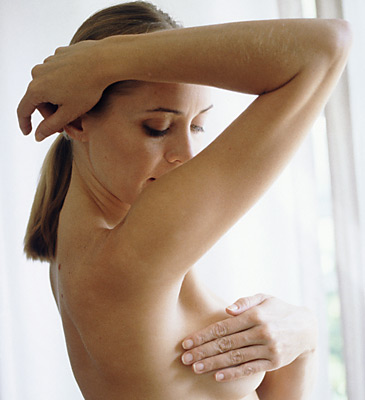Breast cancer is the second cause of mortality among women after cervical cancer. Prevention and, in particular, early diagnosis of this disease have a major role.
Prevention of breast cancer involves, first, adopting a healthy lifestyle. Consumption, therefore, as much fresh food that can be eaten raw, and avoids high fat and processed caffeine (chocolate, chocolate cakes, coffee, etc.). Give up eating fatty meat (pork, lamb, goose, duck). Try to enter in your daily diet as many fruits and vegetables. Fruits and vegetables are major sources of vitamins and mineral substances without which your body can not function properly.
According to recent studies certain vegetables and fruits have an overwhelming role in preventing breast cancer. Preventing breast cancer can be made through daily consumption of mushrooms, tomatoes, parsley, grapes and green tea. A medical study published shows that people who have a diet rich in flavonoids (substances that can be found in grapes) poses a reduced risk to fall ill with breast cancer than those who do not have healthy food habits.
Prevention of breast cancer requires also as much exercise. People who tend to do physical exercise daily are less likely than the risk of breast cancer. A half hour walk every day can make miracles, helping you to have a strong and healthy body.
Prevention of breast cancer involves also specialized and regular checks. Periodic examination of the breasts can be done either by breast ultrasound or by mammography. Breast ultrasound is indicated for women aged up to 35 years. Breast ultrasound is a noninvasive method to detect any breast conditions occur. It is necessary to resort to breast ultrasound once a year to eliminate the risk of breast disease.
Mammography is a special x-ray that allows visualization and detection of breast abnormalities. Mammography is an analysis recommended in a period of approximately two years for women aged over 35 years. The reason why women with pots up to 35 years can not take advantage of this procedure is that the composition within them is more dense and does not allow for an imaging results. Neither mammography nor ultrasound are not painful operations. It is important to turn to this analysis in order to prevent breast cancer, a disease so frequent in recent years.
Self-examination. Beyond the medical examination, you will need to examine your breasts monthly. Breast self-examination is recommended to perform monthly, four days after the cessation of menstrual bleeding, when breasts are not swollen and painful. Palpation can be done from the age of about 18 years. Auto-palpation of breast is done in a prone position, the breast must be properly examined and with one arm under the head. Using three fingers, massage your breasts slightly, trying to sense the presence of any groups.
Self-examine your breasts using a circular motion without pressing too powerful because you can damage the mammary gland. If you feel something wrong, use two fingers to make sure if it is a node. If you notice swelling of the skin, orange peel appearance, deformation or leakage of breast, do not delay to consult a doctor.
